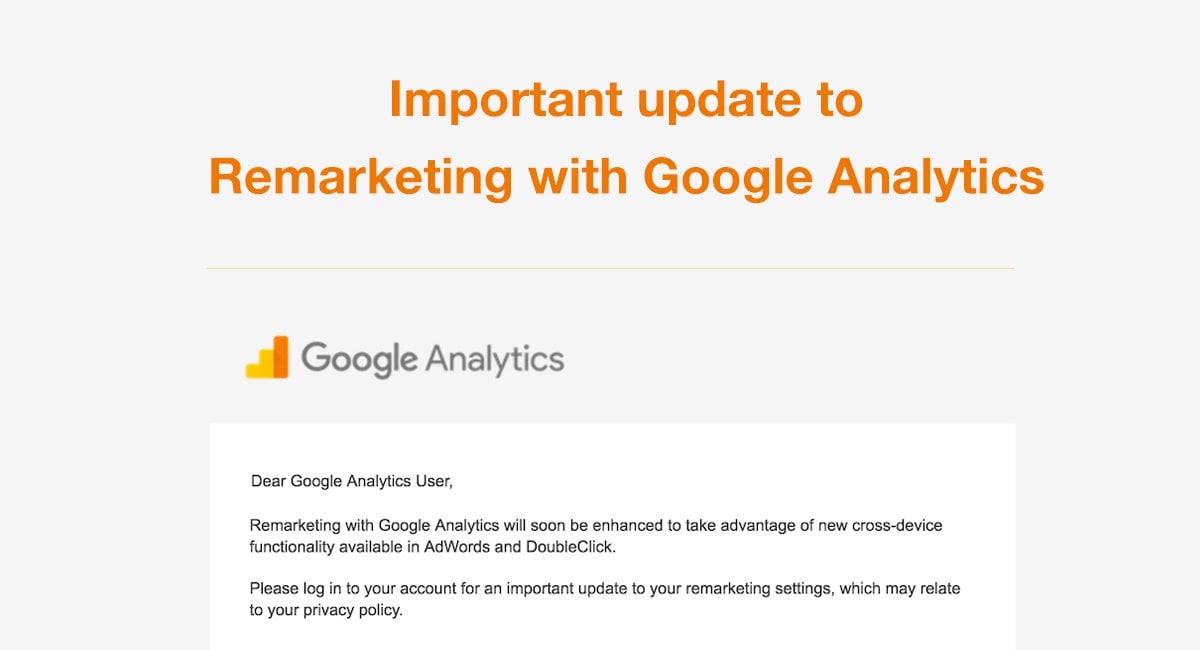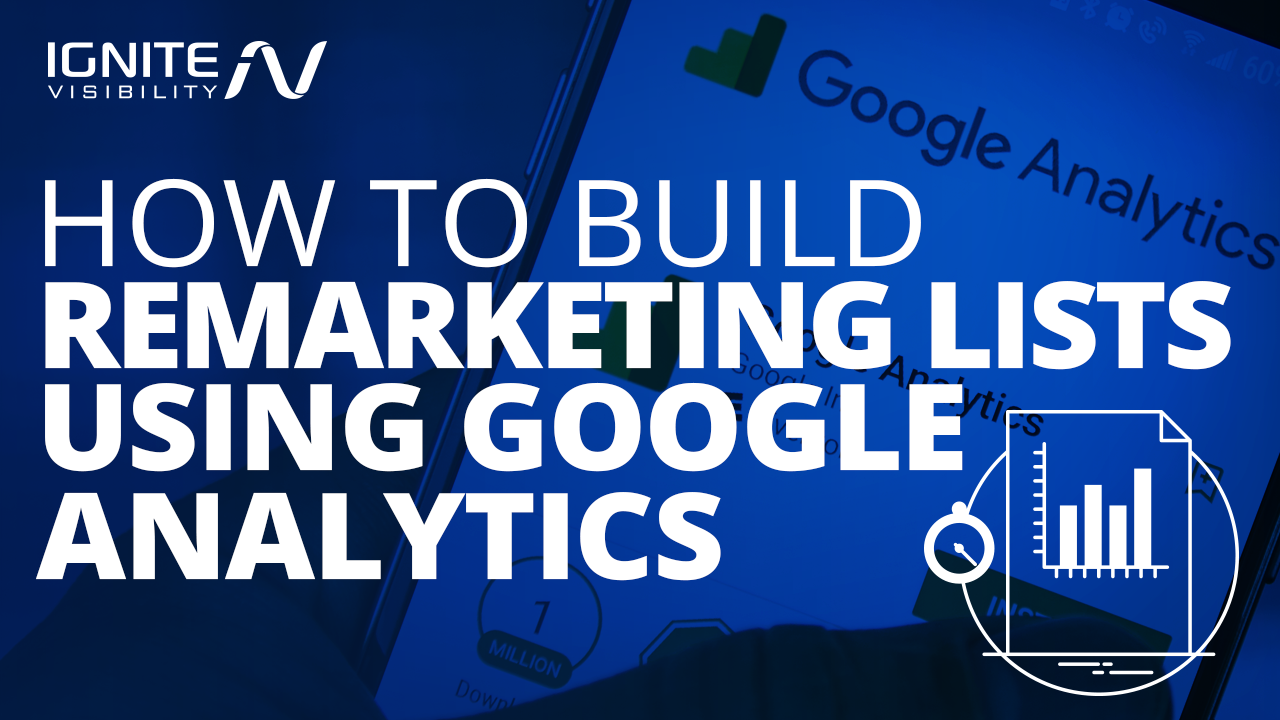Effective Techniques for Remarketing in Google Analytics
In the realm of digital marketing, the world of remarketing in Google Analytics stands as a crucial tool for companies intending to boost their on the internet existence and conversion prices. Through critical target market division, customized remarketing checklists, and interesting ad creatives, services can craft personalized projects that reverberate with their target audience. The true success exists in the capability to constantly fine-tune and enhance these methods based on performance metrics and information understandings. By discovering the nuances of dynamic remarketing and leveraging sophisticated tracking tools, businesses can unlock the complete potential of their remarketing efforts, bring about raised brand presence and client interaction.
Target Market Division
Utilizing target market division is a critical approach in maximizing the efficiency of remarketing campaigns within Google Analytics. By splitting your audience into distinctive teams based upon their behavior, demographics, or interests, you can customize your advertising messages to be extra appropriate and engaging. This strategy permits you to deliver customized advertisements to certain sections, boosting the chance of conversion.

Furthermore, audience division aids you understand the varying demands and choices of different customer teams, enabling you to craft even more engaging ad creatives and offers. This targeted approach not only boosts the efficiency of your remarketing initiatives but also improves overall campaign efficiency.
Establishing Up Remarketing Checklists
To properly apply remarketing strategies in Google Analytics, the initial action entails developing targeted remarketing lists based upon certain target market communications. Establishing remarketing lists permits marketers to section their web site site visitors into different categories based on their habits, such as pages seen, items looked for, or activities taken on the website. By specifying these segments, marketing professionals can then produce relevant and individualized advertisements that target these certain groups, increasing the possibility of conversion.
Remarketing lists can be established making use of various requirements such as web page brows through, period of browse through, specific goal conclusions, and even specific events set off on the site. This level of customization enables marketers to customize their ads to match the interests and choices of each fractional target market, bring about greater interaction and conversion prices.
In addition, remarketing listings can likewise be produced based upon data imported from various other sources like CRM systems, enabling much more exact targeting. By establishing these targeted remarketing checklists, online marketers can efficiently connect to possible customers who have currently shown interest in their product and services, maximizing the impact of their remarketing campaigns.
Developing Engaging Ad Creatives
After segmenting website site visitors right into targeted remarketing checklists based on particular audience communications, the next essential step is to craft compelling ad creatives that reverberate with each segmented team's passions and choices. The effectiveness of remarketing campaigns heavily depends on the capability of these ad creatives to record the interest of the target market and drive them to take the wanted action.
To create compelling advertisement creatives, it is vital to understand the special features of each segmented group (What Is “Remarketing” In Google Analytics?). Customizing the messaging, visuals, and provides to align with the passions and choices of the target market can considerably enhance the possibilities of conversion. Utilizing vibrant ads that instantly readjust content based upon the customer's habits can additionally boost the personalization of the advertisement experience

Tracking Performance and Optimization
Efficient monitoring of project efficiency and constant optimization are essential facets of successful remarketing techniques in Google Analytics. To make certain the performance of remarketing projects, marketing professionals should routinely track crucial performance metrics such as click-through rates, conversion prices, and return on ad invest. By checking these metrics, marketing professionals can obtain useful insights right into the performance of their projects and determine areas for improvement.
In Google Analytics, online marketers can utilize devices like conversion tracking and target market division to assess the efficiency of their remarketing projects. Conversion tracking allows marketing professionals to track particular activities that customers take after clicking a remarketing ad, offering important data on the performance of the campaign in driving desired outcomes. Audience division, on the other hand, makes it possible for marketing experts to separate their target market right into various segments based on different criteria such as demographics, behavior, and rate of interests, enabling even more targeted and customized remarketing efforts.
Continual optimization is important for taking full advantage of the impact of remarketing projects. Marketers must make use of A/B testing to experiment with various ad creatives, messaging, and targeting approaches to identify one of the most reliable methods. By frequently examining project performance data and making data-driven optimizations, online marketers can guarantee that their remarketing campaigns are accomplishing the desired outcomes and driving conversions effectively.
Leveraging Dynamic Remarketing
Utilizing vibrant remarketing can considerably boost the importance and impact of targeted ads in Google Analytics. This sophisticated strategy allows marketers to reveal tailored ads to users who have previously visited their website or used their mobile application. By dynamically displaying services or products that the individuals have revealed passion in, dynamic remarketing helps to keep the brand name fresh in their minds and motivates them to go back to Discover More Here finish an acquisition.

Furthermore, vibrant remarketing Visit Website projects can be automated and optimized in real-time based on performance data, making sure that the advertisements stay relevant and effective. By leveraging vibrant remarketing in Google Analytics, marketers can develop more impactful and targeted ad campaign that reverberate with their target market and drive results.
Final Thought
Finally, effective remarketing strategies in Google Analytics involve audience division, targeted remarketing listings, compelling advertisement creatives, performance tracking, and vibrant remarketing. By concentrating on customized advertisements, information evaluation, and continual optimization, businesses can boost conversion rates and drive involvement effectively. Leveraging devices like conversion monitoring ensures that ads stay relevant and individualized, leading to general success in remarketing initiatives.
With calculated audience division, tailored remarketing checklists, and interesting ad creatives, businesses can craft individualized projects that reverberate with their target audience. Making use of dynamic ads that immediately change material based on the individual's habits can likewise enhance the personalization of the advertisement experience.
Conversion tracking enables marketing professionals to track certain activities that users take after clicking on a remarketing ad, supplying beneficial data on the efficiency of the project in driving preferred results.Utilizing dynamic remarketing can considerably boost the importance and effect of targeted ads in Google Analytics - What Is “Remarketing” In Google Analytics?.In final thought, reliable remarketing methods in Google Analytics include target market division, targeted remarketing lists, compelling advertisement creatives, performance surveillance, and dynamic remarketing